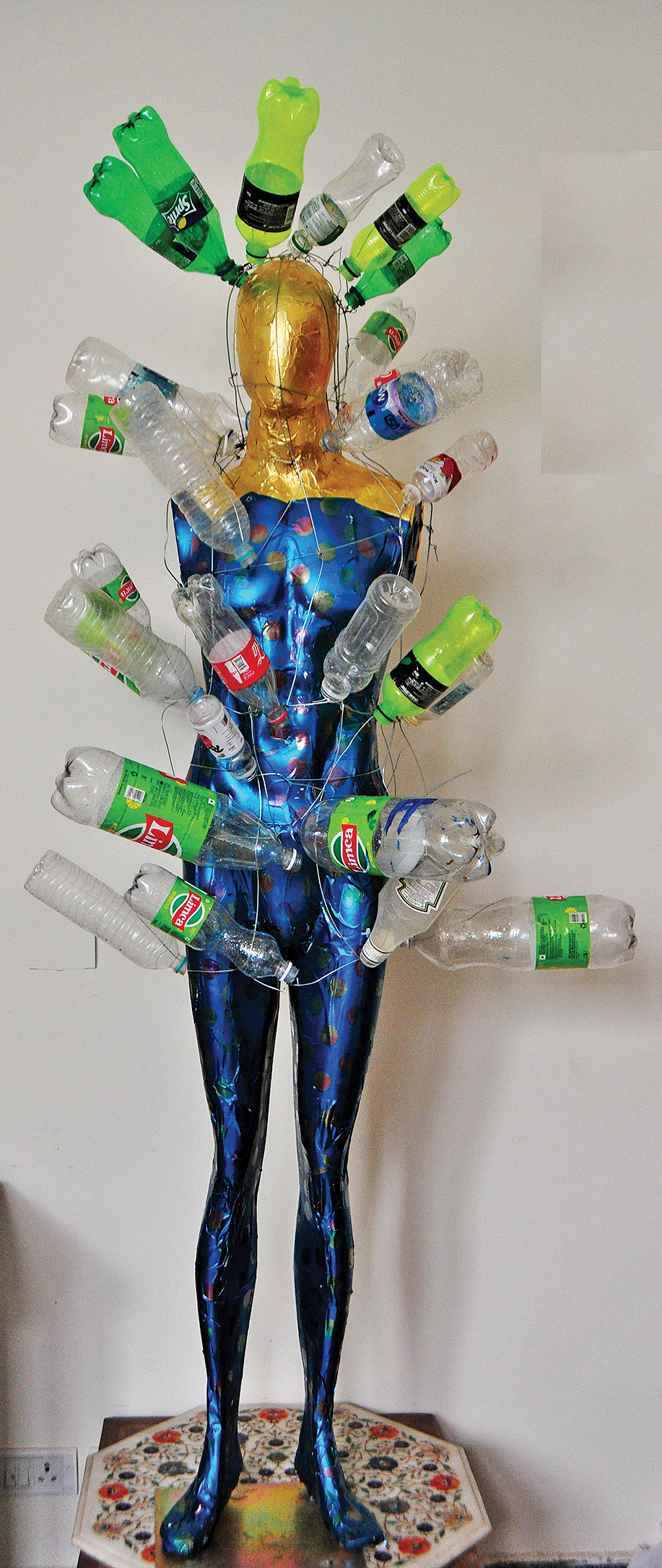
At a time when the Capital is shrouded with a blanket of smog, here’s an exhibition that puts the spotlight on climate change that is making headlines repeatedly.
Titled ‘Labyrinth: Earth. Environment . Climate Change’, the works of artist Anu Jindal serve to draw our attention to the present and future of Planet Earth and its environment — the beautiful and the threatened.
“It is my small endeavour as an artist to address the problem of environmental degradation and problems created by climate change,” says Jindal.
Jindal’s current creative expression is deeply rooted in the investigation and visual interpretation of nature and being, the interweaving of natural elements and urban life, of habitat and impact of climate change.
“Humanity’s continued and increasing carbon footprint is causing concern to some, while others remain insulated. Planet Earth’s bounty would appear to be boundless but we humans with insatiable consumption levels are proving it otherwise. The ubiquitous plastic remains an integral part of our lives. Emissions of greenhouse gases pervade our atmosphere. Permafrost is thawing, oceans are rising, pushing biodiversity towards extinction,” reads the note of the exhibition.
Elucidating the title, Jindal states that it encapsulates the entire essence of the exhibition. “The word labyrinth denotes something that is different from a maze. Maze brings you to a dead end, whereas a labyrinth is vey structured. You can easily come out of it or you can get lost in it if you want. If you read the news, its full of stories on climate change and there are several environmentalists who keep predicting doomsday. It is all too negative. Hope should always be there with us.”
Jindal initially worked extensively in the medium of etching, having explored various media from printmaking, painting, sculpture and pottery, she has expanded into mixed media and installation art, exercising the need to engage in larger spaces. This show has on display around 15 paintings, five etchings and seven sculptures.
Working on this project for several years, most of the material Jindal used for the artworks are ‘found’ materials. “I have tried not to use new materials. Many of the wooden sculptures are made of drift wood, I retrieved the fallen trees that I saw on the streets and nearby parks, dragged them to my garage and let it season. It is all collected wood,” she adds.
Is there a way out of this degrading state, or will we remain mesmerised in a maze? The artist questions “Whither next?” through paintings, mixed media and installations.
The exhibition is on display at India International Centre till November 8
Boho Bazaar’s Christmas edition returns to Delhi on December 20–21 with 300+ brands, live music…
Delhi government to install air purifiers in 10,000 classrooms in the first phase to provide…
Dense fog disrupted operations at Delhi airport on Friday, leading to 79 flight cancellations and…
After past differences, Karan Johar and Kartik Aaryan finally collaborate on Tu Meri Main Tera…
Delhi Fire Service has initiated comprehensive fire safety inspection drive in restaurants, hotels and clubs…
Out of 40 air quality monitoring stations across the city, 14 recorded severe air quality…